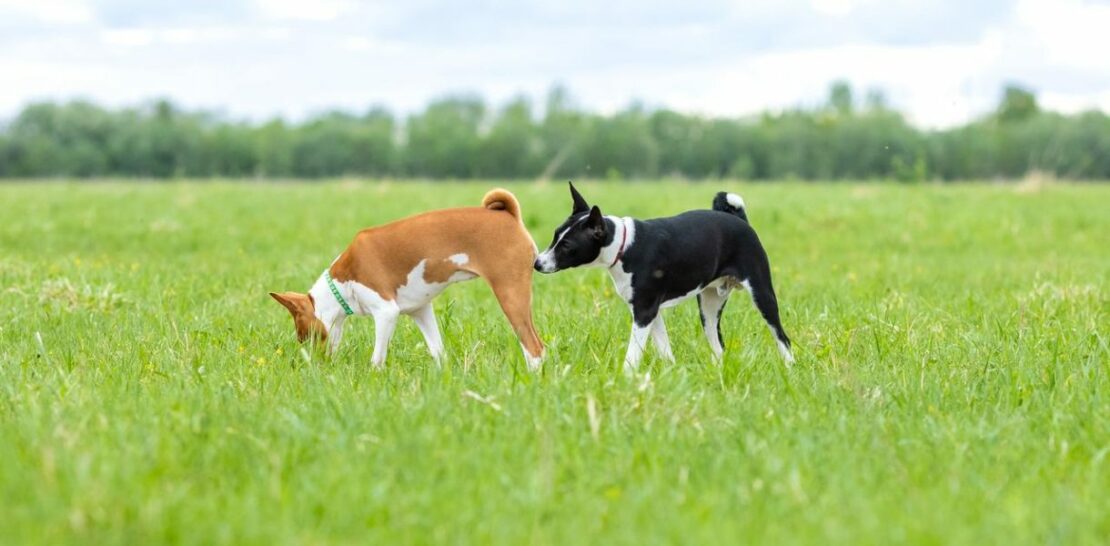As specialists of the English language, we often find ourselves intrigued by the fascinating behaviors of our furry friends, dogs.
One such behavior that has piqued the curiosity of numerous dog owners and casual observers alike is the act of sniffing each other’s behinds.
In this exhaustive exploration, we delve deep into the reasons behind this peculiar canine behavior, shedding light on the biological, social, and evolutionary significance of this seemingly odd ritual.
Join us as we journey through the complex world of dog communication and uncover the importance of butt sniffing in maintaining harmony and order within the canine kingdom.
Unraveling the Biological Basis of Butt Sniffing
In order to fully comprehend why dogs sniff each other’s behinds, it is essential to first understand the underlying biological mechanisms that drive this behavior.
The primary driving force behind a dog’s proclivity for sniffing other dogs’ behinds lies in their highly evolved olfactory system. A dog’s sense of smell is vastly superior to that of humans, with some estimates suggesting that their olfactory capabilities are up to 100,000 times more powerful. This remarkable sense of smell is facilitated by the presence of a specialized organ called the vomeronasal organ (VNO), also known as the Jacobson’s organ. The VNO is located in the nasal cavity and is specifically designed to detect pheromones, which are chemical signals secreted by animals to communicate with others of their species.
When dogs sniff each other’s behinds, they are essentially “sampling” the unique cocktail of pheromones emitted by the other dog’s anal glands. These glands secrete a variety of volatile compounds that carry information about the dog’s age, gender, reproductive status, and even its emotional state. By detecting and interpreting these pheromones, dogs are able to gather crucial information about each other without the need for direct physical contact or vocalization.
Exploring the Social Significance of Canine Butt Sniffing
Armed with an understanding of the biological basis of this behavior, we can now delve into the social aspects of butt sniffing in the complex world of canine interactions.
- Establishing Hierarchies: In a pack setting, dogs rely on various forms of communication to establish and maintain social order. One critical aspect of this communication is the establishment of dominance hierarchies. By deciphering the pheromones present in another dog’s anal gland secretions, a dog can determine the social rank of its counterpart. This information allows them to recognize and submit to more dominant dogs, preventing unnecessary conflict and maintaining harmony within the group.
- Facilitating Mating: As mentioned earlier, the pheromones emitted by a dog’s anal glands carry information about its reproductive status. This is particularly important for male dogs trying to locate a female in estrus or “heat.” A male dog can detect the unique pheromones released by a female dog in heat, which signals to him that she is ready to mate. This chemical communication is vital for the propagation of the species and ensures that the strongest and most viable individuals are able to reproduce.
- Reinforcing Bonds: Social bonding is an essential aspect of pack life, and butt sniffing can help to strengthen these bonds between pack members. By engaging in this intimate and vulnerable form of communication, dogs can develop and maintain trust within their social group, ensuring that they can rely on each other for support and protection.
Tracing the Evolutionary Roots of Butt Sniffing
As we’ve uncovered the biological and social significance of butt sniffing, it is worthwhile to also consider the evolutionary history of this behavior and how it has been shaped by natural selection.
- Survival Advantage: In the wild, a dog’s ability to gather information about its surroundings and other animals is critical to its survival. The act of butt sniffing allows dogs to quickly and efficiently assess potential threats, allies, and mating partners. By honing their olfactory skills and refining their ability to interpret pheromonal cues, dogs have been able to adapt and thrive in a variety of environments.
- Speciation and Diversification: Over time, as canine species diversified and evolved, so too did their specific olfactory capabilities and pheromone profiles. This diversification has allowed for the development of unique dog breeds with distinct physical and behavioral traits, each with theirown set of pheromonal signals. As a result, the act of butt sniffing has evolved to be an essential tool for dogs to identify and interact with members of their own breed, as well as other breeds and species within their ecological niche.
- Domestication and Co-Evolution with Humans: The process of dog domestication has had a significant impact on the evolution of canine behaviors, including butt sniffing. As humans have selectively bred dogs for specific traits and purposes, such as hunting, herding, and companionship, dogs have co-evolved with us to better serve our needs. This includes refining their ability to communicate with humans and other dogs, using their olfactory prowess to navigate the complex social landscapes of both human and canine societies. Butt sniffing remains a crucial aspect of this communication, allowing dogs to form strong bonds with their human families and other dogs in their social circles.
Dispelling Common Misconceptions about Butt Sniffing
Given the somewhat taboo nature of this behavior in human societies, it is not surprising that there are several misconceptions surrounding the act of dogs sniffing each other’s behinds. By debunking these misunderstandings, we can better appreciate the true significance and purpose of this behavior in the canine world.
- It’s Not Just About Curiosity: While it is true that dogs are naturally curious creatures, butt sniffing is not driven solely by curiosity. As we have discovered throughout this exploration, dogs engage in this behavior for a multitude of reasons, from gathering vital information about each other to establishing social hierarchies and reinforcing bonds.
- It’s Not Inherently “Rude” or “Inappropriate”: In the context of human social norms, sniffing another person’s behind would certainly be considered impolite and invasive. However, it is crucial to remember that dogs have their own set of social rules and etiquette, which differ significantly from our own. In the canine world, butt sniffing is a perfectly normal and acceptable form of communication, and should not be viewed through the lens of human morality.
- It’s Not a Sign of Aggression: Although it is true that some aggressive dogs may engage in butt sniffing as a means of asserting dominance or provoking a confrontation, it is essential to recognize that the behavior itself is not inherently aggressive. In most cases, dogs sniff each other’s behinds as a means of exchanging information and fostering social cohesion, rather than to intimidate or antagonize their counterparts. Being able to distinguish between the two contexts is crucial for ensuring the safety and wellbeing of both dogs and humans alike.
In conclusion, the act of dogs sniffing each other’s behinds is a complex and multifaceted behavior that serves a variety of crucial functions within the canine community. By understanding the biological, social, and evolutionary underpinnings of this behavior, we can gain a deeper appreciation for the intricacies of dog communication and the important role that butt sniffing plays in maintaining harmony and balance in the world of our four-legged friends. So the next time you witness this seemingly peculiar ritual, take a moment to marvel at the incredible world of canine communication that is unfolding right before your eyes.




